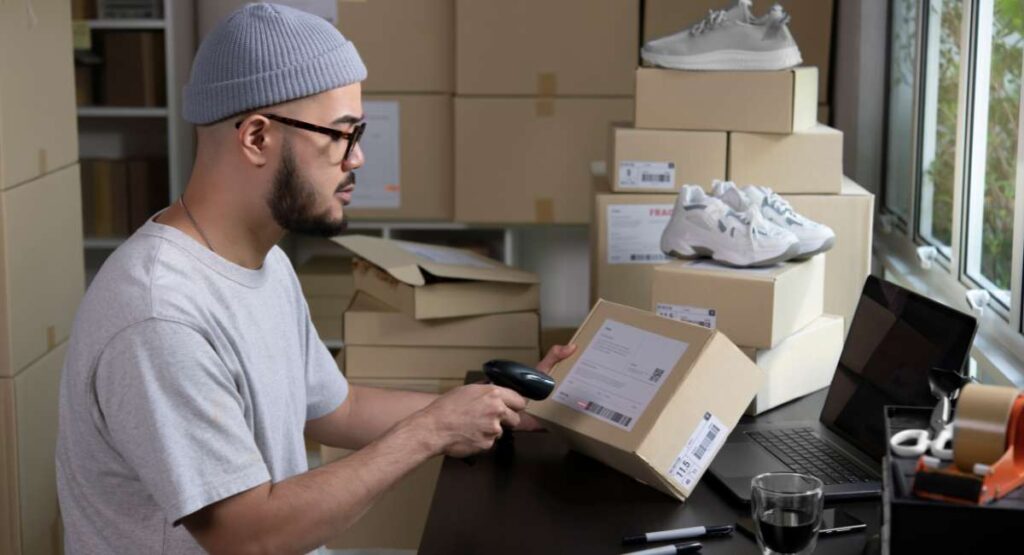Launching a Shopify store in 2025 is easier than ever — but turning it into a revenue machine from day one? That takes strategy.
Too many e-commerce entrepreneurs focus on aesthetics and skip the fundamentals that drive conversions. If your store looks great but doesn’t convert visitors into buyers, you’re losing money.
In this post, we’ll walk you through our expert process for building high-converting Shopify stores from day one. Whether you’re launching your first product or scaling a brand, these tips will give you an edge in today’s crowded e-commerce market.
Step 1: Choose the Right Theme With Performance in Mind
Shopify offers hundreds of themes, but not all are built for conversion.
Look for themes that are:
- Mobile-optimized (most traffic comes from mobile)
- Fast-loading
- Designed with clear CTAs and product visibility
- Compatible with apps like reviews, upsells, and timers
Pro Tip: We recommend starting with Shopify 2.0-compatible themes. They allow more customization, faster performance, and better app integrations.
Step 2: Build a Clean, Conversion-Focused Layout
Your homepage and product pages must guide the visitor, not distract them. Here’s what every high-converting layout includes:
Homepage Essentials:
- Clear value proposition above the fold
- Featured products or bundles
- Trust badges or reviews
- Clear CTAs (Shop Now, View Collection)
Product Page Must-Haves:
- High-quality images and videos
- Concise, benefit-driven product descriptions
- Trust badges (secure checkout, money-back guarantee)
- Social proof: reviews, user-generated content
- Urgency elements: low stock alerts, countdowns
Step 3: Build Trust From the First Click
Trust is the biggest driver of conversions. Without it, visitors bounce — no matter how good your product is.
Add Trust Signals Like:
- Verified reviews and ratings (using apps like Judge.me or Loox)
- About Us page with brand story and photos
- Contact page with real contact info
- Secure checkout badges and payment icons
- Fast shipping and return policy clearly stated
Step 4: Optimize for Speed and Mobile
Performance directly affects conversions. In 2025, slow stores lose sales fast.
Improve Speed By:
- Compressing image sizes
- Using Shopify-native apps when possible (less bloat)
- Avoiding unnecessary pop-ups and auto-play videos
Mobile Optimization Tips:
- Use large buttons and readable fonts
- Keep navigation simple
- Test on multiple devices before launch
Step 5: Add Conversion Boosters Early
From launch day, you can set your store up for higher AOV (average order value) and better retention.
Add These Conversion Boosters:
- Upsell/Bundle apps: Offer add-ons or bundles at checkout
- Email/SMS capture: Use pop-ups or embedded forms for first-time discounts
- Exit-intent offers: Trigger a last-chance deal before they leave
- Live chat or chatbot: Provide real-time help to overcome objections
Bonus: Track Everything and Iterate Fast
Use tools like Shopify Analytics, Hotjar, and Google Analytics to watch behavior. What are people clicking? Where are they dropping off?
Key Metrics to Monitor:
- Conversion rate
- Bounce rate
- Add-to-cart rate
- Checkout abandonment
Update your product pages, offers, or CTAs weekly based on the data.
How Vertex Media Builds High-Converting Shopify Stores
At Vertex Media Marketing, we don’t just design beautiful Shopify sites — we build sales engines.
Our process includes:
- Full store setup and theme customization
- Conversion-focused UI and UX
- Trust and credibility optimization
- Speed and mobile performance enhancements
- App integrations for upsells, reviews, and retention
We also help you launch your first campaigns with Facebook, Instagram, and TikTok ads to generate immediate traffic and sales.
Frequently Asked Questions (FAQs)
Q1: How long does it take to launch a Shopify store?
A: With a clear plan and expert help, most stores can launch in 2–4 weeks.
Q2: Do I need to hire a designer or can I DIY?
A: You can start DIY, but a conversion expert can dramatically improve results and ROI.
Q3: What’s the average conversion rate for a Shopify store?
A: Most stores convert at 1–3%. With optimization, 3–6% or higher is possible.
Q4: Should I start with paid ads right away?
A: Yes — paired with email/SMS capture and a good offer, ads can bring in early traction and revenue.
Q5: Do reviews really make a difference?
A: Absolutely. Reviews increase trust and can boost conversions by 30% or more.
Conclusion
Your Shopify store shouldn’t just look good — it should sell. With the right strategy, layout, and trust-building tactics, you can launch a high-converting e-commerce store from day one.
👉 Want expert help to build a Shopify store that’s designed to convert? Contact Vertex Media Marketing for a free consultation today.

